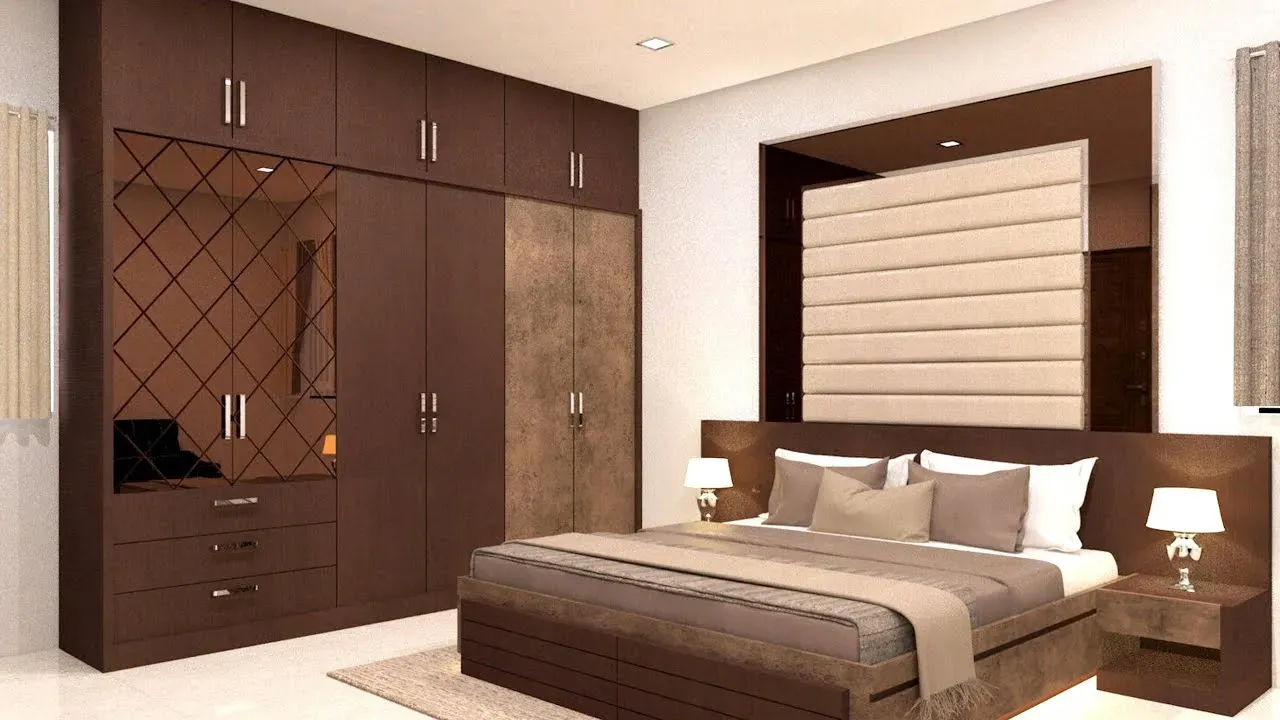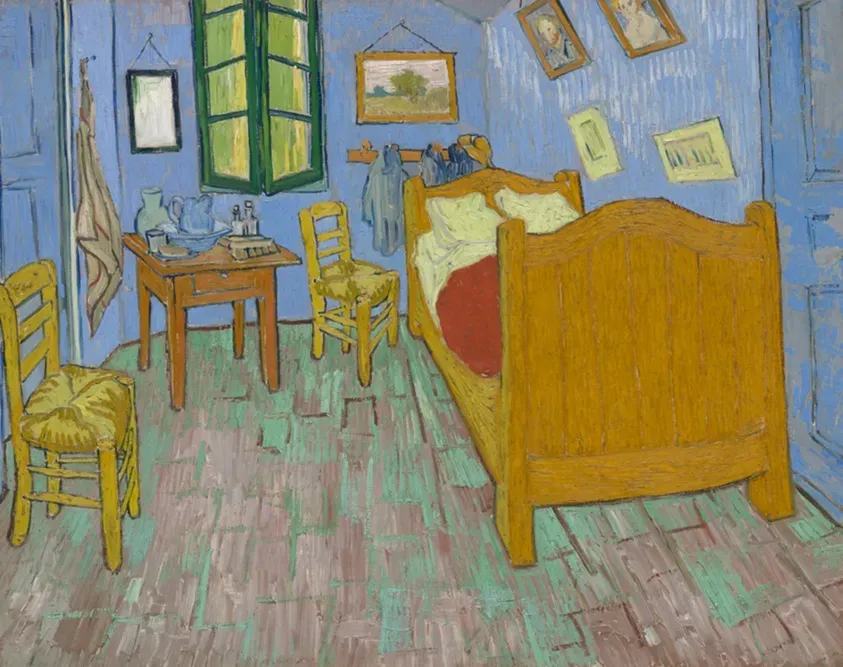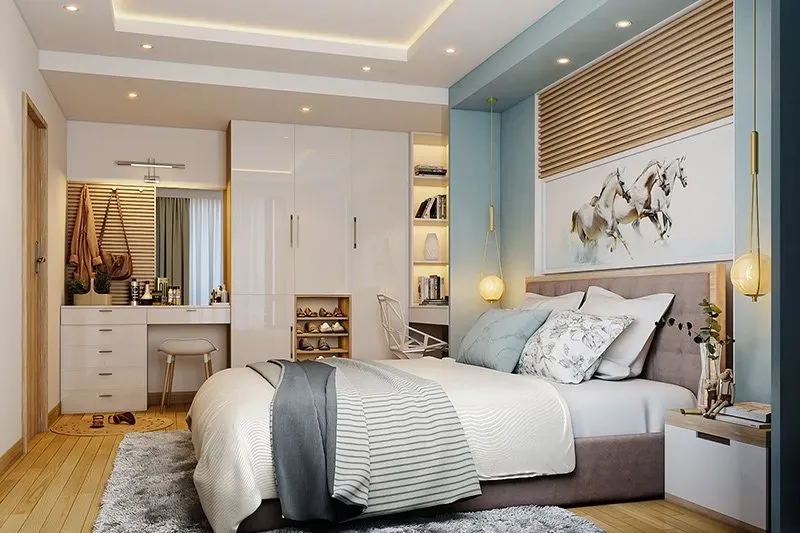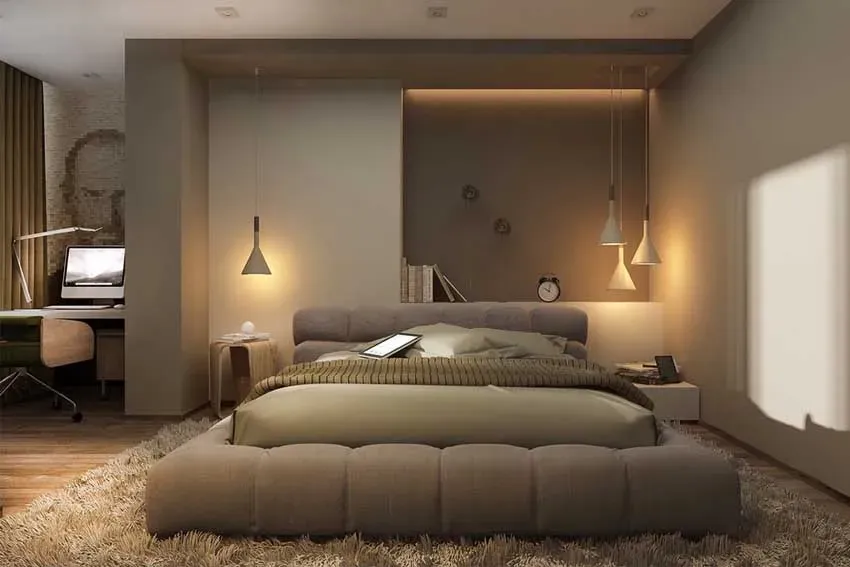Table of Contents
Feeling like your bedroom is less 'calm retreat' and more 'storage unit' with a bed shoved in it? Or maybe you've scrolled through countless perfect pictures, wondering how anyone actually achieves that look without a design degree and a bottomless budget. Let's be real, figuring out solid bedroom furniture design ideas can feel like a puzzle with missing pieces. It’s not just about buying furniture; it's about making smart choices that transform a room into a genuinely relaxing, functional space tailored just for you. How do you balance style with practicality? What pieces are actually worth the investment? And how do you arrange everything so it feels spacious, even if it's not? This isn't another collection of unattainable magazine spreads. We're going to tackle the core elements of bedroom furniture design head-on. We'll cover selecting the foundational pieces, figuring out a layout that works for your life, adding essential storage and comfort layers, and finally, pulling it all together with a style that feels authentic. Stick with us, and you'll get practical steps to create a bedroom that’s not just pretty, but truly serves as your personal sanctuary.
Why Bedroom Furniture Design Matters More Than You Think
Why Bedroom Furniture Design Matters More Than You Think
Beyond Just a Place to Sleep
Look, your bedroom isn't just where you crash at the end of a long day. It's supposed to be your escape hatch, your personal recharge station. But if walking into it feels more like entering a cluttered storage unit or a sterile hotel room, something is fundamentally off. The way your bedroom furniture design is set up, the pieces you choose, the very air the room breathes – it all slams into your subconscious. A poorly designed bedroom can amp up stress, mess with your sleep quality, and frankly, just make you feel unsettled. It's not just about aesthetics; it's about creating an environment that actively supports your well-being. Think about it: you spend roughly a third of your life in there. Doesn't it make sense to make that space work for you, rather than against you?
Function Follows Form (But Both Matter)
It’s easy to get caught up in the look, but functionality is king. Ever tripped over a misplaced ottoman in the dark? Or maybe your dresser drawers snag, or your closet is a black hole of mismatched socks and forgotten sweaters because the storage layout makes zero sense? That's not just annoying; it's a daily friction point. Effective bedroom furniture design ideas consider how you actually live in the space. Where do you drop your clothes? Where do you read? Do you need a spot for a morning coffee? The right furniture placement and selection streamlines your routine, reduces frustration, and just makes life a little smoother. It’s the difference between a peaceful start to your day and a frantic search for your keys.
Common Bedroom Design Headaches
- Not enough storage (hello, floor-drobe).
- Poor layout leading to awkward movement.
- Lighting that's too harsh or too dim.
- Furniture that's too big or too small for the room.
- Lack of a comfortable spot to sit that isn't the bed.
Your Sanctuary, Your Rules
Ultimately, your bedroom is the most personal space in your home. It's where you can truly let your guard down. The furniture you choose and how you arrange it speaks volumes about you, even if only to yourself. Crafting a bedroom furniture design that reflects your personality, your needs, and your definition of comfort isn't a luxury; it's essential for creating a true sanctuary. When the furniture fits the space, the colors feel right, and everything has its place, you build a room that feels like a refuge, a place where you can genuinely relax, recharge, and be yourself. It’s an investment in your peace of mind, not just a purchase of wood and fabric.
Choosing Core Pieces: The Bed and Beyond in Bedroom Furniture Design
Choosing Core Pieces: The Bed and Beyond in Bedroom Furniture Design
The Bed: The Undisputed Anchor
Alright, let's talk about the big one. The bed isn't just where you sleep; it's the absolute boss of your bedroom furniture design. Everything else revolves around it. So, picking the right bed frame is crucial. Do you want something grand and commanding, like a four-poster, or something low-profile and minimalist? Think about the size – a king bed in a tiny room is going to feel like a wrestling ring took over. A queen is standard for a reason, offering space without overwhelming most rooms. Twin or full beds work for smaller spaces or kids' rooms. Consider the style too. A solid wood frame screams traditional, while metal or upholstered frames lean modern or contemporary. Don't just grab the first thing that looks okay; picture it in your room. Does it fit the vibe? Does it leave enough space to actually move around? This isn't just about aesthetics; it's about the fundamental structure of your sanctuary.
Nightstands and Dressers: The Essential Support Crew
Once the bed is sorted, you need its trusty sidekicks: nightstands and dressers. These aren't optional extras; they're workhorses in your bedroom furniture design. Nightstands need to be the right height for your bed – you shouldn't have to stand up to grab your phone or a glass of water. Think about what you need on them. A lamp? A book? A drawer for essentials? Dressers are all about storage, obviously, but don't just buy the biggest one you can find. Measure your space. Consider how much storage you actually need for folded clothes. A tall, narrow dresser saves floor space, while a wide, low one can double as a display surface or even a spot for a TV. These pieces need to be functional, but they also need to visually complement the bed. Mismatched woods or clashing styles can make the room feel disjointed.
Essential Bedroom Furniture Pieces
- Bed Frame (size matters!)
- Mattress (obviously, but linked to the frame)
- Nightstands (at least one, ideally two)
- Dresser or Chest of Drawers
- Mirror (can be standalone or part of a dresser)
Scale, Style, and Synergy
Choosing these core pieces for your bedroom furniture design isn't just a checklist; it's about creating a cohesive look and feel. Scale is critical – furniture that's too big makes a room feel cramped, while pieces that are too small can look lost. Hold off on buying a massive armoire if your room is postage-stamp sized. Think about the visual weight of the pieces too. A heavy, dark wood bed might feel overwhelming in a light, airy room. Aim for synergy. The nightstands should feel like they belong with the bed, not like they were dragged in from a different house. The dresser should complement the overall style. It’s like building a band; each instrument needs to play well with the others to make good music. Getting these foundational pieces right sets the stage for everything else you'll add to your bedroom.
Smart Layouts: Arranging Your Bedroom Furniture Design for Flow
Smart Layouts: Arranging Your Bedroom Furniture Design for Flow
The Bed's Reign and the Walkway Rule
you've picked your bed, your nightstands, and your dresser. Now comes the real test of your bedroom furniture design ideas: putting it all together so you can actually move around without bumping into things. The bed is the star, right? So, it usually goes on the most dominant wall, often the one you see when you walk in. But here's the crucial bit: leave room! You need space to walk around the bed, especially if two people are using it. Cramming a king-size bed against two walls just because it fits technically is a rookie mistake. Aim for at least two feet of clearance around the sides and foot of the bed if possible. This isn't just for aesthetics; it's about not stubbing your toe at 3 AM or having to shimmy sideways to get to your dresser.
Nightstand Necessity and Dresser Dynamics
With the bed placed, the nightstands slide in beside it. Easy, right? Not always. They need to be within easy reach, obviously, but also leave enough space for opening drawers or getting out of bed. Don't let them block walkways to closets or doors. The dresser's placement depends on its size and the room's shape. A long dresser might work best on a wall opposite the bed, while a tall chest could tuck into a corner. Make sure there's enough clearance in front of drawers to actually pull them open fully. Sounds obvious, but you'd be surprised. Good bedroom furniture design ideas consider the practical mechanics of living in the space, not just how it looks in a photo.
Layout Principles to Live By
- Prioritize pathways: Ensure clear routes to doors and closets.
- Balance the room: Don't shove all the big furniture onto one wall.
- Consider window placement: Avoid blocking natural light unless necessary.
- Think about outlets: Place furniture near power sources for lamps and charging.
- Visualize the flow: Imagine walking through the room. Where do you go? What do you need access to?
Beyond the Basics: Seating and Storage Zones
Once the core pieces are locked in, think about adding layers. A comfy chair or bench can create a reading nook or a spot to put on shoes. Where does it fit without making the room feel crowded? Maybe it goes in a corner, or at the foot of the bed. If you're adding extra storage like a wardrobe or storage bench, consider its height and depth. Does it overwhelm the space? Could a different piece, like under-bed storage or floating shelves, serve the same purpose more efficiently? Every piece in your bedroom furniture design should earn its spot, contributing to both the function and feel of the room without obstructing movement or making the space feel smaller than it is. It's about creating zones within the room that make sense for how you use them.
Adding Layers: Storage, Seating, and Other Bedroom Furniture Ideas
Adding Layers: Storage, Seating, and Other Bedroom Furniture Ideas
Beyond the Dresser: Hiding the Chaos
So, you've got the bed, the nightstands, the dresser. Great start for your bedroom furniture design ideas. But let's be honest, most of us need more places to stash stuff than just a dresser. This is where smart layering comes in. Think vertically. Tall, narrow bookcases or shelving units can hold books, decorative items, or even baskets for smaller bits and bobs without eating up much floor space. Under-bed storage is a lifesaver for seasonal clothes or extra blankets – look for beds with built-in drawers or invest in rolling storage bins. Even a simple bench at the foot of the bed can hide a surprising amount of clutter if it has a lift-top seat. The goal here is to incorporate storage solutions that look like they belong, not like you just shoved a plastic bin under the bed and hoped for the best. It's about making the room feel calm, not like a perpetual sorting project.
Adding Comfort and Function: More Than Just Sleeping
Your bedroom isn't just a place for horizontal living. Adding layers of seating or other functional pieces elevates your bedroom furniture design from basic to truly livable. A comfortable armchair in a corner creates a perfect reading nook, a place to escape for a few minutes before hitting the hay. If space is tight, even a small stool or ottoman can serve as a temporary seat or a place to toss clothes (though we're aiming for less of that, right?). Consider a small desk or vanity if you need a spot to work briefly or get ready. These pieces add layers of utility and personality. They signal that this room is for more than just sleeping; it's a space to relax, think, and prepare for the day. Just make sure whatever you add fits the scale of the room and doesn't make it feel cramped or like an obstacle course.
Layering Essentials Checklist
- Vertical storage (shelves, tall chests)
- Under-bed storage (drawers, bins)
- Storage benches or ottomans
- Accent chair or seating area
- Small desk or vanity (if space allows)
Styling Your Sanctuary: Matching Furniture to Your Bedroom Design
Styling Your Sanctuary: Matching Furniture to Your Bedroom Design
Finding Your Vibe: It's More Than Just a Color
you’ve got the bed, the nightstands, the dresser. They’re placed reasonably well, and you can navigate the room without bruising a hip. Now, how do you make it feel like *you*? This is where the fun, and sometimes the headache, of styling your sanctuary comes in. It's about matching your bedroom furniture design to a larger vision, a feeling you want the room to evoke. Are you aiming for calm and minimalist? Cozy and layered? Bold and dramatic? Don't just pick pieces because they look good alone; think about how they interact. A sleek, modern bed frame paired with an ornate, antique dresser is going to look... confused, unless you're a styling wizard. Start by thinking about the overall atmosphere. Pin some images, grab some paint chips, feel some fabrics. What colors, textures, and shapes make you feel relaxed and happy? Your furniture choices should support that feeling, not fight it.
Mixing Metals and Woods Without Making a Mess
Nobody says all your bedroom furniture design pieces have to match perfectly. That can actually look a bit sterile, like a showroom floor. The trick is knowing how to mix without creating chaos. You can absolutely pair a warm wood dresser with a metal bed frame, or a painted nightstand with a natural wood chest. The key is finding common ground. Maybe the wood tones share a similar undertone (cool or warm). Maybe the metal finishes are consistent (all brushed nickel, or all matte black). You can also tie disparate pieces together through other elements in the room – repeating a color from a painted piece in your bedding or art, or echoing a metal finish in your lighting fixtures. It takes a little intention, but a well-mixed room feels layered and lived-in, not just assembled. It's about intentional contrast, not random acquisition.
Mixing and Matching Tips
- Choose a dominant wood tone or metal finish, then introduce one or two others sparingly.
- Vary textures: pair smooth wood with textured fabric, or sleek metal with rough wood.
- Repeat colors from painted furniture in textiles or art.
- Ensure pieces share a similar level of formality (rustic with rustic, modern with modern).
- Use a unifying element like rugs or wall color to tie everything together visually.
The Finishing Touches: Textiles and Trinkets
Furniture is the skeleton of your bedroom design, but textiles and decor are the flesh and blood. This is where you truly infuse personality and pull your bedroom furniture design ideas into a cohesive whole. Think about your bedding – it covers the largest piece of furniture! Layers of duvets, throws, and pillows add comfort and texture. Curtains frame your windows and add softness. A rug anchors the space and adds color or pattern. Don't forget lighting; lamps on nightstands and a floor lamp create ambiance and task lighting. Mirrors can make a room feel larger and bounce light around. Art on the walls tells a story. These aren't just afterthoughts; they are essential components that connect your furniture pieces and make the room feel finished, inviting, and uniquely yours. It's the difference between a collection of items and a curated sanctuary.
Your Bedroom, Reimagined
So, we’ve walked through the nuts and bolts of bedroom furniture design ideas – from picking the right anchor pieces to making the layout flow and adding those crucial layers of storage and comfort. It's clear that building a bedroom you actually *want* to spend time in isn't some mystical art form. It's about making intentional choices that fit your space and your life. Forget chasing trends that feel forced. Focus on creating a room that functions well for you, whether that means finally having enough drawer space or just enough floor cleared to do a quick stretch. Your bedroom should be the place where you can genuinely decompress at the end of the day, free from clutter and awkward furniture arrangements. Go ahead, take these ideas and start making your bedroom work for you, not the other way around.
